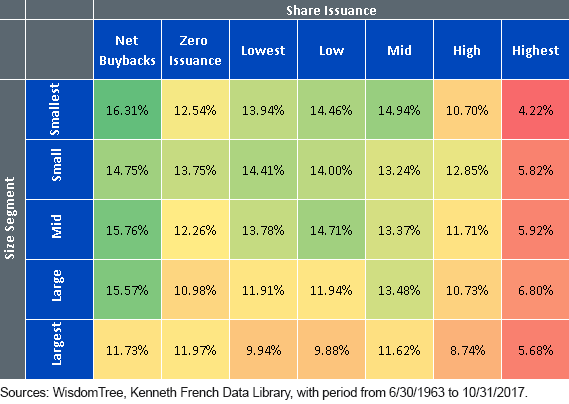In U.S. equities, investors love the idea of small-cap stocks. Some of these companies represent the entrepreneurial spirit, and it’s no secret that many investors dream of the “lottery-like” experience of finding the next Facebook, Amazon, Netflix or Google before it becomes a giant company—collecting stratospheric returns along the way.
More Realistic Strategies in U.S. Small Caps
Of course, the chance of finding such blockbuster firms early in their life cycles is extremely low, and we think it would be difficult for most investors to build strategic allocations with that type of thinking. Fortunately, history has shown that certain characteristics of U.S. small-cap stocks have been associated with long-term outperformance.
One tilt that has been associated with stronger returns is U.S. small caps that are buying back their shares—and it’s notable that traditional market capitalization-weighted benchmarks miss it.
Net Buybacks: Beneficial/Highest Net Issuance: Significantly Lower Returns

Market Capitalization-Weighted Small-Cap Indexes Miss This Focus

For definitions of indexes in the chart, visit our glossary.












Leave A Comment